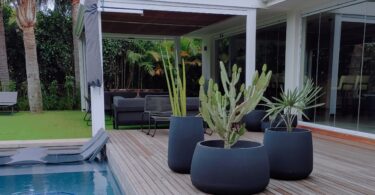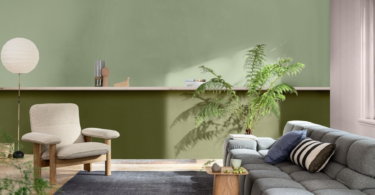Air plants (Tillandsia) are so simple to grow and care for. A member of the Bromeliad family, there are hundreds of different varieties. They are a popular indoor plant choice because they get all of the water and nutrients they need through their specialised leaves – no soil required – and their roots can attach to just about anything.
Caring for air plants
● As the name suggests, air plants need constant, good air circulation.
● Give them lots of bright, filtered light. Direct sunlight is not recommended.
● Don’t let an air plant sit somewhere that’s very cold – very low temperatures will kill the plant.
● Although air plants can survive for long periods of drought, they need water to thrive. They cannot get replacement water from their roots or draw on reserves like succulents do. Indoors, the hotter and drier the air, the more you need to water. Mist twice a week with a spray bottle, and soak the whole plant in water for 2-3 hours every one to two weeks. Spray the top and bottom of the plant and let the water run into the plant along the leaves. After watering, the leaves should feel stiff and full.
● Your air plant will rot if left wet for too long. If the plant is growing in a container, be sure to empty out any excess water. Also, do not surround your air plant with moss. It will hold too much water and this will rot your plant.
● Add liquid fertiliser to the soak once a month. Soaking the plants in pond or aquarium water acts as a natural fertilizer and can help revive struggling plants.
● Insect sprays and air fresheners can have an adverse effect on your air plant as they absorb everything through their leaves.
● Air plants use their roots merely as anchors, so you won’t harm the plant by removing them. If they look unsightly, simply snip them off.
Display ideas
● When considering how you’re going to display your air plant, keep in mind that you have to be able to water it and that it has to be placed somewhere it will get sufficient light.
● Don’t plant your air plant in soil – it will die. If you want to pot it like a normal plant and you need something to stop it from falling over, use a filler that drains quickly like gravel, pebbles, seashells, coloured glass gems, corks, etc.
● You can grow air plants by mounting them on a wooden board, a decorative tile, a mirror or other interesting backing material using waterproof glue (use just enough to hold the plant where you want it). You can also use floral wire, fishing line, Velcro, pins, nails and even staples (only use nails and staples on plants with sufficient roots, as nailing or stapling through the leaves will harm the plant). Don’t use copper wire either – it is toxic to air plants.
● Turn your air plants into a form of ‘green’ art by securing a wire grid to an empty picture frame and nesting the plants inside before mounting it on a blank wall.
● Group several air plants together in a vintage metal container on a patio table.
● Don’t throw away jam jars, bottles, chipped or mismatched glassware – rather use them as ‘vases’ for your air plant collection and mix and match them on a sideboard.
● Create an air-plant terrarium for your coffee table. Just make sure you leave at least one side open for fresh air flow.
● Air plants hanging from something as simple as a length of fishing line will eventually form beautiful spheres as they grow.
● Wrap a ‘garland’ of air plants around a wooden post, metal pole or balcony railing.
● Insert a length of wire, coiled at the top to form a holder, into a solid wooden block. Slot an air plant into the holder so you get a sense that the plant is literally floating above the block. Line up a variety of these on your kitchen windowsill.
● Nestle an air plant inside a beaker (the kind you used in Science class) or a long, glass cylinder vase. Group a few together for an exotic display.
● Unglazed clay pots are wonderfully earthy and also absorbent, so your air plant won’t rot due to excess moisture.
● Hang horizontal or vertical metal trellis panels against a wall and dot with a variety of air plants.
● A length of chicken wire, rolled into a cylindrical cage-type vase, can also play host to a collection of air plants.
● Hang air plants at varied heights in an empty, well-lit corner – in glass globes, teardrop terrariums or colourful ceramic pods.
● Air plants will grow in any direction – even upside down. So use your imagination and have some fun with these quirky plants.
For more indoor container ideas, see The Hanging Garden.











Leave a Comment